Rating of the best SFP transceivers for 2025

Optical equipment is found in many areas, including telecommunications networks. To connect optical lines, a device such as a transceiver is used, the reception and transmission of data depends on it, and the better it is, the better the process will be.
Content [Hide]
Why do you need a transceiver
The transceiver is a small device placed in a metal case. On one side, it has contacts designed to connect to the main device, and on the other side, lockable connectors (ports) for connecting cables. The item has an oblong shape and compact dimensions, which are slightly larger than a flash drive.
A transceiver is a device that allows you to convert electrical signals into optical ones, and also makes it possible to:
- connect sections of the local network located at a distance of more than 100 meters without the use of additional amplifiers;
- do not use PON modems when connecting to a fiber optic line provider;
- use a module and cable to increase the speed and range of information flow.
The device itself is suitable for connecting to lines with various transmission parameters.
Pros of using it
The device has a number of advantages, among which are:
- the speed of information transfer, which increases when using devices;
- broadcast distance also increases;
- the amount of transmitted data due to the fact that spectral multiplexing systems are used also increases;
- the ability to simultaneously use different types of transceivers in one switch for subscribers located at different distances.
The transceivers do not require additional power supplies; in case of their replacement, there is no need to turn off the power supply of the equipment to which the modules are connected. Devices are capable of transmitting data at a speed of about 1250 Mbps, and some models even allow you to track a signal over a fiber optic line by displaying its main parameters.
Specifications and features
Before purchasing a transceiver, you should first familiarize yourself with the technical characteristics of the device, since each model has its own. In this way, you can avoid compatibility issues with existing or custom networks, as well as with the equipment you use. So, from the main technical characteristics, when choosing, you should pay attention to:
- The speed at which information will be transmitted starts from 100 Mb / s. Users should be aware that SFP+ and XFP devices should be selected for high speed operation.
- The number of fibers that are used in SFP transceivers, they are single-fiber and two-fiber, the latter have a transmitter (TX) and a photodetector (RX), reception is carried out on one, and transmitted on another fiber. For single-fiber, reception and transmission are separated inside the module using a special built-in WDM multiplexer.
- The type of fibers used, there are two of them - single-mode SM and multi-mode MM fibers, only one of them can be used in the device.
- Connector type, produce single fiber SFPs with SC connectors or single or dual fiber devices with LC connectors.
- The signal transmission range or the so-called optical budget, it is calculated as the difference between the maximum transmitter power and the minimum receiver power, the larger it is, the greater the transmission range will be.
Knowing the capabilities of the transceiver, you can choose the right model, which in the future will not cause problems in the operation of the receiver.
Types of SFP modules
The first version of the device appeared in 2001, after which many types and modifications of the transceiver came out, but SFP MSA can be considered the most common.They are produced in accordance with the MSA agreement, that is, taking into account all the requirements of the specification and in compliance with established standards. SFP modules are divided into types in accordance with the information transfer technology and they are:
- Single-fiber (WDM, BiDi) SFP transceivers are the simplest devices equipped with only one fiber that is used to receive and transmit an optical signal. They are in great demand in urban networks.
- Two-fiber SFP modules, they use two optical fibers to receive communication, one of which transmits and the other receives a signal. Models of this type are very popular among consumers.
- CWDM SFP modules, they form a signal in CWDM systems, outwardly do not differ from two-fiber devices. Due to the presence of special lasers and multiplexers, they create multi-channel information transmission systems within one or two fibers. Due to the fact that this type of modules allows you to create a large and stable connection with minimal investment, it can be the most popular.
- Another type of modules is DWDM SFP, they are used in the DWDM WDM system.
The quality of the selected device and its compatibility with the main equipment will depend on the uninterrupted operation of the network.
Marking SFP modules
Manufacturers mark each device with a certain color, as a rule, not the entire case is painted, but only the plastic latch. But due to frequently changing standards and requirements, not everyone has the same color scheme, some companies choose colors exclusively as part of their production, which sometimes causes confusion. In addition to color, the following information is applied to the body of the device:
- SFP - form factor;
- 1SM - single-mode SFP module;
- 1550nm - a parameter indicating how long the transmitter has a current wave;
- 3SC - cable termination type;
- 1000Base-LX is the supported standard.
For a specialist, such information will allow you to choose a suitable module model, so before buying, you can always consult with someone who understands such subtleties.
What to consider when choosing
Before purchasing, you should not only familiarize yourself with the characteristics of the purchased device, but also take into account some additional points:
- The compatibility of the receiver and transmitter, this parameter can be called the most important of all taken into account when choosing a model. Before purchasing, you should check these points with the seller.
- A new or already used optical module, there are a large number of devices on the market, but unfortunately not all of them are new. There are already used ones, but they differ from each other, and knowing how, it is possible to avoid unnecessary costs. So, the used device most often has scratches on the outer part of the case and on the inside of the port, as a rule, this is the main point that indicates that the device has already been used. Another way to determine the condition of the transceiver is to check the power and compare the result of the test with the specification, if the results differ significantly, then most likely the module has already been used before.
- The price, if we consider a three-way SFP, then its acquisition will be more profitable, and there is no difference in performance.
- Temperature stability, in data centers or communicators where optical SFP devices are mainly used, the temperature can vary significantly, and too high or low temperatures can adversely affect the optical power of devices.
- Quality and service, the quality of the model can be understood in a year, and the period of operation from the manufacturer, on average, is 5 years. Therefore, you should choose proven brands that will not fail in six months or a year.
Given all these subtleties, you can purchase a device that allows you to receive a high-quality signal and at the same time last a long time without causing inconvenience to the user.
Rating of the best SFP transceivers for 2025
A wide selection of models on offer from various brands makes it difficult for buyers to choose. After all, everyone wants to get not only a suitable, but also a high-quality device that will transmit a signal with high quality and last a long time. But despite the huge list of products, buyers highlight some models that, in their opinion, can be called the best.
Inexpensive
The list of inexpensive devices includes models whose cost will not exceed 2000 rubles.
SFP+ Double LC, 10Gbps
votes 0
An optical transceiver of the dual-fiber type with an SFP+ form factor and an LC connector. The transmission speed of this device reaches 10 Gb / s at a distance of up to 300 m, which swings the working wave, then its length is T x 850 nm, the Digital Diagnostics Monitoring (DDM) function is also provided. The design is designed to work with two multimode optical fibers with bidirectional information transmission.DDM is a special function that allows you to view and control such parameters as the power of the received and transmitted signal, voltage, temperature of the technical device, as well as the bias current in the transmitter circuit. Their slightest changes are visible to the user and give an idea of the general state of the optical system and its paths. But for the full operation of this function, it must be supported not only by the transceiver, but also by the switch itself. This model of the device is perfect for creating a high-speed transmission line within buildings.
Also, the device can be replaced without stopping the overall process, and the operating temperature ranges from 0 to +70 degrees.
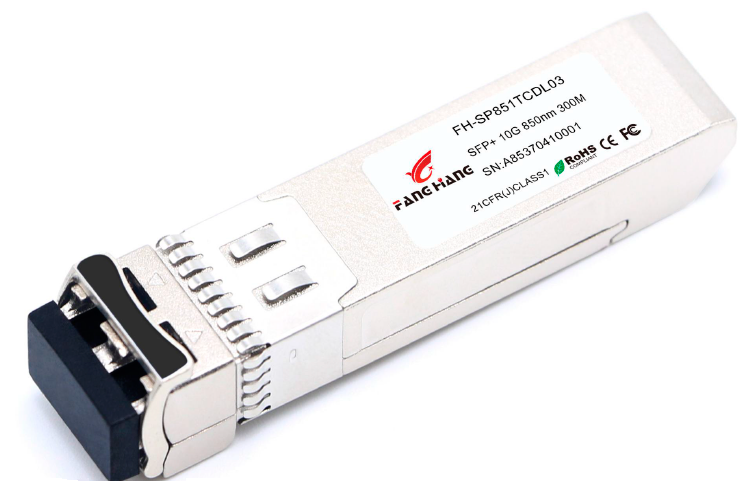
- quality;
- price;
- high transmission speed;
- the presence of a function
- guarantee;
- wavelength.
SFP RJ-45, 1.25G
votes 0
FIBO is a manufacturer of optical SFP modules that provide information transmission over a distance of 100 m at a speed of 1.25 Gbps over 5e twisted pair. IT-S1-RJ45 optical device supporting 1000 Mbit/s full duplex communication channels, with a pulsed 5 level amplitude modulation module. The design has a generic serial ID that is compatible with the SFP MSA and can be accessed via the 2-wire serial protocol at ACh.
- quality;
- price;
- ease of use.
- small distance.
SFP Double LC, 1.25Gbps, 550m, 850nm, MM, DDM
votes 0
A two-fiber device with a wavelength of 850 nm is designed to form communication networks between several objects located at a fairly decent distance.In this case, data transmission over fiber-optic lines is carried out at a distance of 550 m at a speed of 1.25 Gbps. The workflow takes place over two fibers using an LC connector. The model is suitable for connection to indoor switches and can operate at temperatures ranging from 0 to +70 degrees. You can replace the design as needed, without shutting down the workflow. The small transceiver is perfectly compatible with digital network equipment such as D-link, 3com, Lucent, Cisco, Nortel, Foundry, Zyxel, HP at speeds up to STM-1 / STM-4 / STM-16.
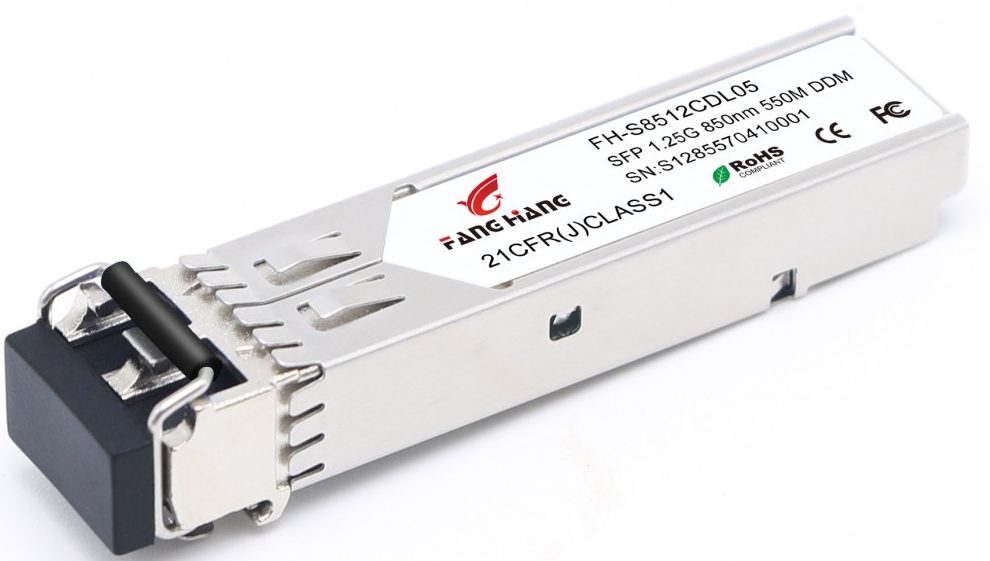
- presence of DDM;
- compatibility with various equipment;
- quality;
- reliability.
- only one year warranty.
SFP WDM Module, 1.25Gbps, 1550/1310nm, 3km, SC, DDM
votes 0
The transceiver of this model is single-fiber, endowed with an information transfer rate of up to 1.25 Gb / s at a distance of up to 3 km. The operating wavelength of the device is Tx 1550 nm / Rx 1310 nm, a connector for connecting SC is provided, and the device also supports the Digital Diagnostics Monitoring (DDM) function. Bidirectional transmission of information occurs in the WDM WDM system over a single-mode optical fiber. You should remember the subtleties of the DDM function, it is designed to control such parameters as outgoing and incoming signal strength, supply voltage, and the temperature of the transceiver itself. Monitoring such data will allow you to monitor the state of the optical system as a whole, but for the normal functioning of DDM, it is necessary to maintain it not only from the module itself, but also from the switch.
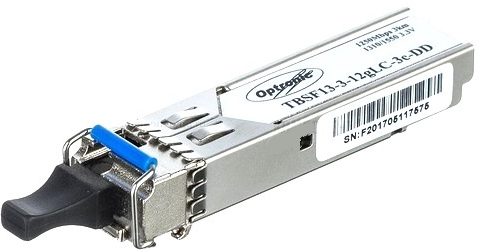
- performance;
- reliability;
- quality;
- price.
- warranty period year.
Expensive
The category of expensive optical devices includes models whose cost exceeds 2000 rubles.
Industrial SFP+ Copper 10 Gb/s, up to 30 m, UTP Cat6, RJ-45
votes 0
An industrial device manufactured by Modultech is a removable transceiver for organizing communication in places with severe climatic conditions, in which the temperature can vary from -40 to +85 degrees. The model of this device provides information transfer at speeds up to 10 Gb / s and over a distance of up to 30 m, all this happens over a twisted pair of category 5e, with a working RJ-45 connector. Communication is carried out on two-fiber lines.
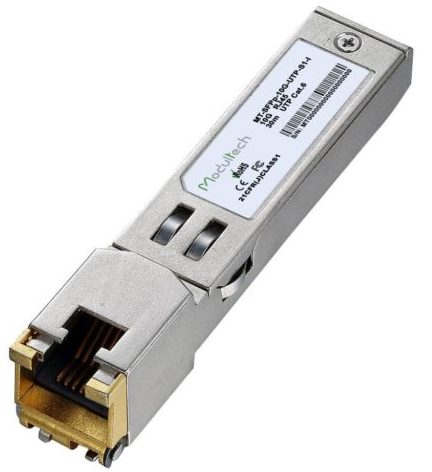
- quality;
- reliability;
- temperature regime.
- price.
SFP+ WDM, 10Gbps, 1270/1330nm, 20km, LC, DDM
votes 0
A single-fiber device from Optronic, designed to move information at a wavelength of 1330/1270 nm, at a speed of 10 Gb / s and over a distance of 20 km. Equipped with an LC optical connector and has a temperature range from 0 to +70 degrees, it allows you to replace it without stopping the work process. Support for the DDM function is provided, but two equipments must support it, that is, not only the module itself, but also the switch. Work is carried out with single-mode fiber, and bidirectional data transmission is carried out in WDM. When creating a transceiver of this model, manufacturers use modern equipment and high-quality components, which ensures high speed and excellent quality of transmitted information.
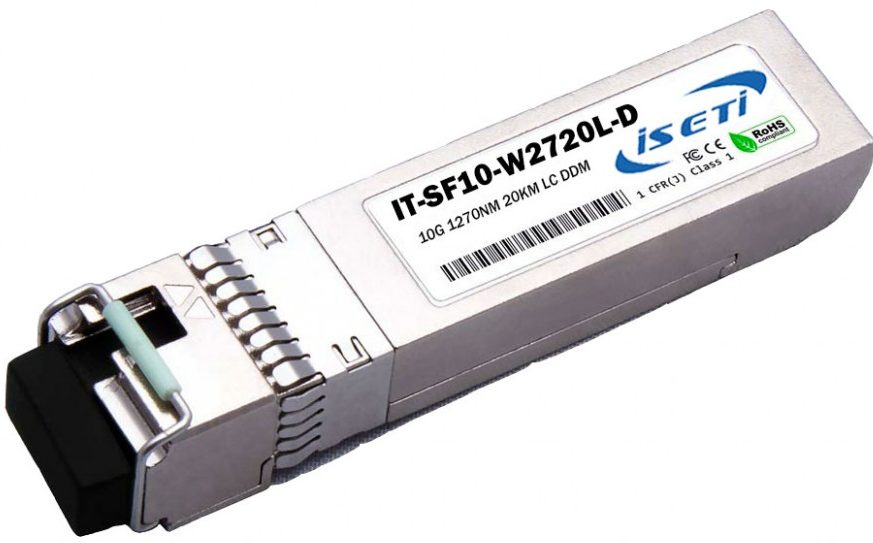
- high speed;
- reliability;
- presence of DDM;
- distance;
- price.
- guarantee period.
XFP+ Double LC, 10Gb/s, 1310nm, 20km, DDM
votes 0
NetLink transceivers are inexpensive and compact devices that provide fast data transmission over distances up to 20 km. The operating wavelength is 1310 nm, and the transmission rate reaches 10 Gb / s, all this is carried out over two single-mode optical fibers. The device is designed in accordance with the requirements and standards of IEEE 802.3ae, equipped with a Duplex LC connector. The model also supports the DDM function, which allows you to control important device parameters, such as temperature, received and transmitted power.
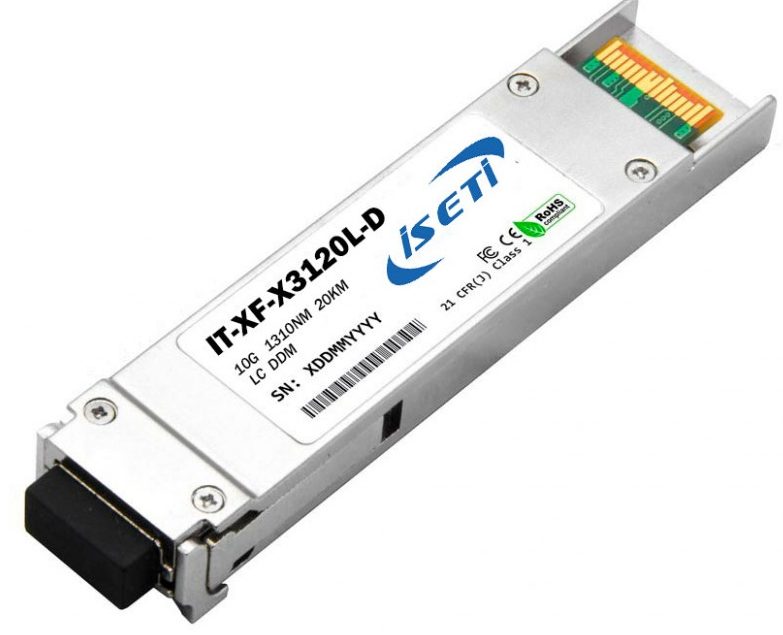
- DDM;
- The distance over which information is transmitted;
- speed;
- price.
- 1 year manufacturer's warranty.
Optical transceivers are an integral part of modern communication systems, with the help of them high-quality and reliable information transmission takes place. But before purchasing such a device, you need to familiarize yourself with its functionality, compare them with your needs, and only then purchase it. If there are no skills to choose, then it is always mono to use the help of specialists in this field.
new entries
Categories
Useful
Popular Articles
-

Top ranking of the best and cheapest scooters up to 50cc in 2025
Views: 131649 -

Rating of the best soundproofing materials for an apartment in 2025
Views: 127687 -

Rating of cheap analogues of expensive medicines for flu and colds for 2025
Views: 124516 -

The best men's sneakers in 2025
Views: 124030 -

The Best Complex Vitamins in 2025
Views: 121937 -

Top ranking of the best smartwatches 2025 - price-quality ratio
Views: 114978 -

The best paint for gray hair - top rating 2025
Views: 113393 -

Ranking of the best wood paints for interior work in 2025
Views: 110317 -

Rating of the best spinning reels in 2025
Views: 105326 -

Ranking of the best sex dolls for men for 2025
Views: 104362 -

Ranking of the best action cameras from China in 2025
Views: 102214 -

The most effective calcium preparations for adults and children in 2025
Views: 102010









